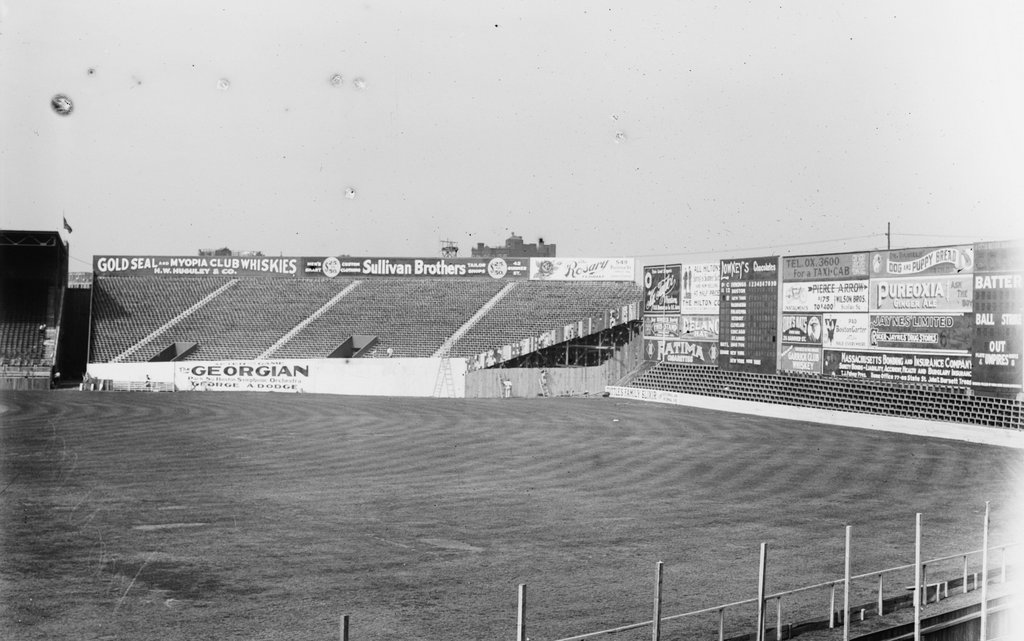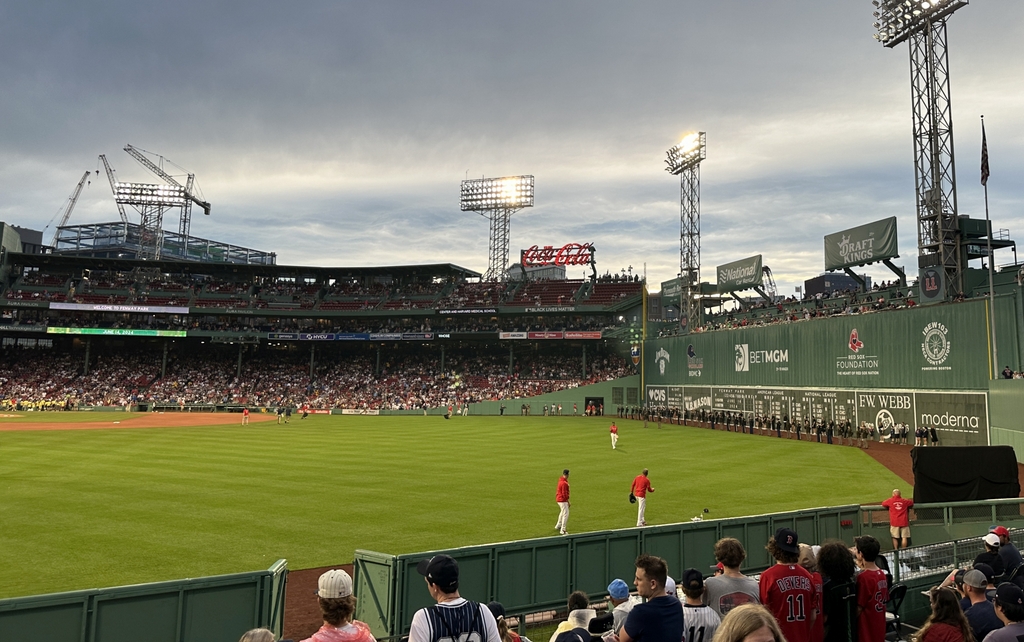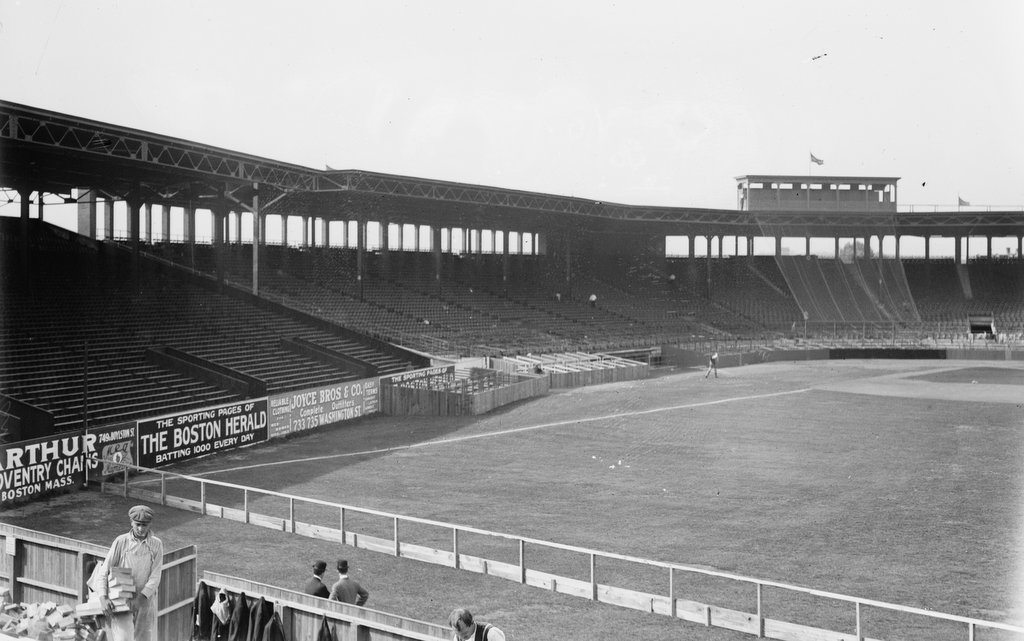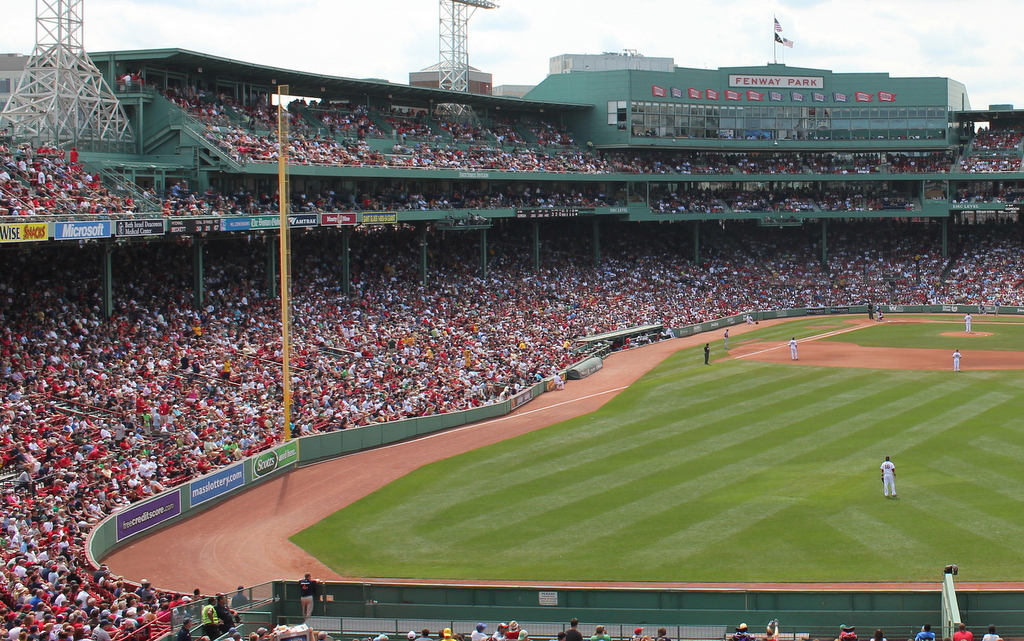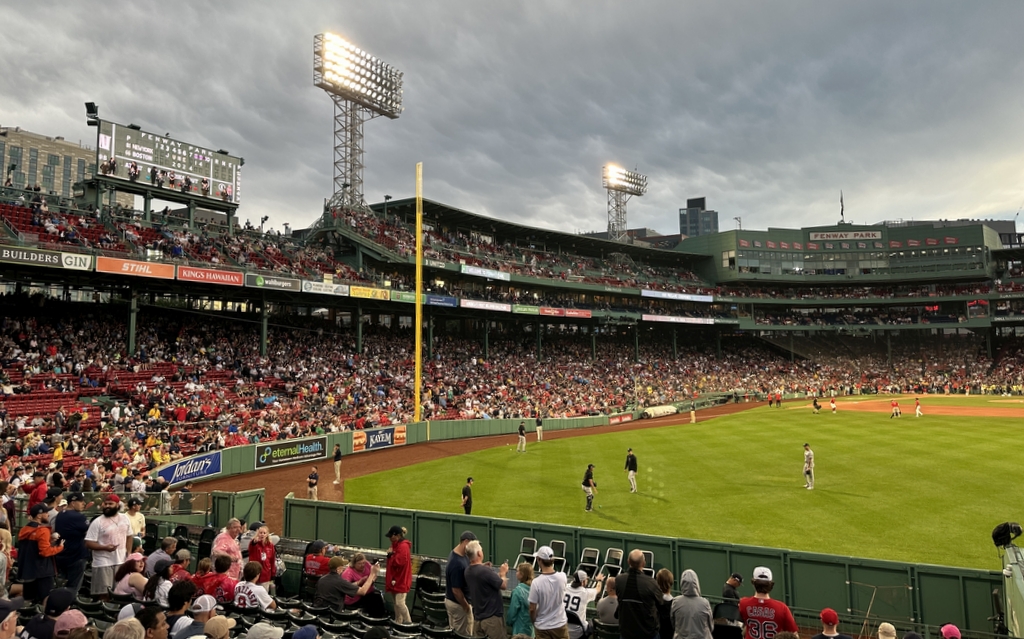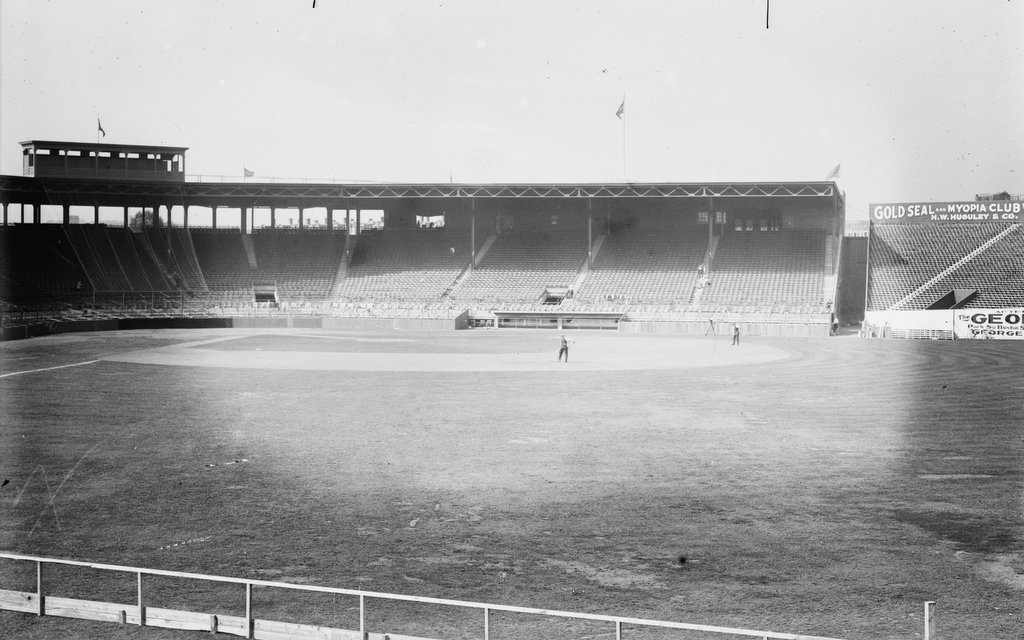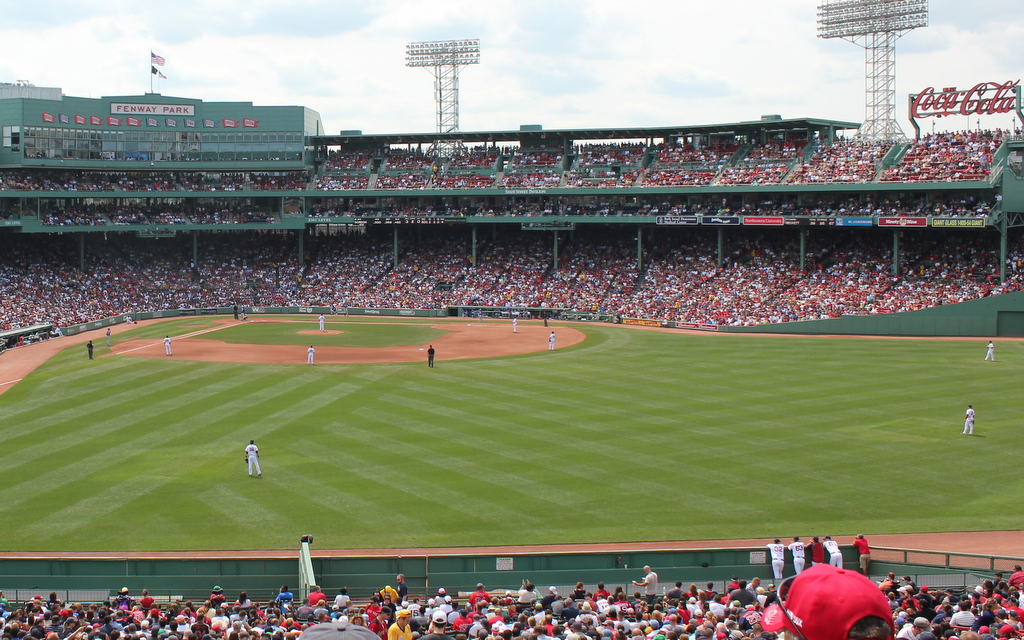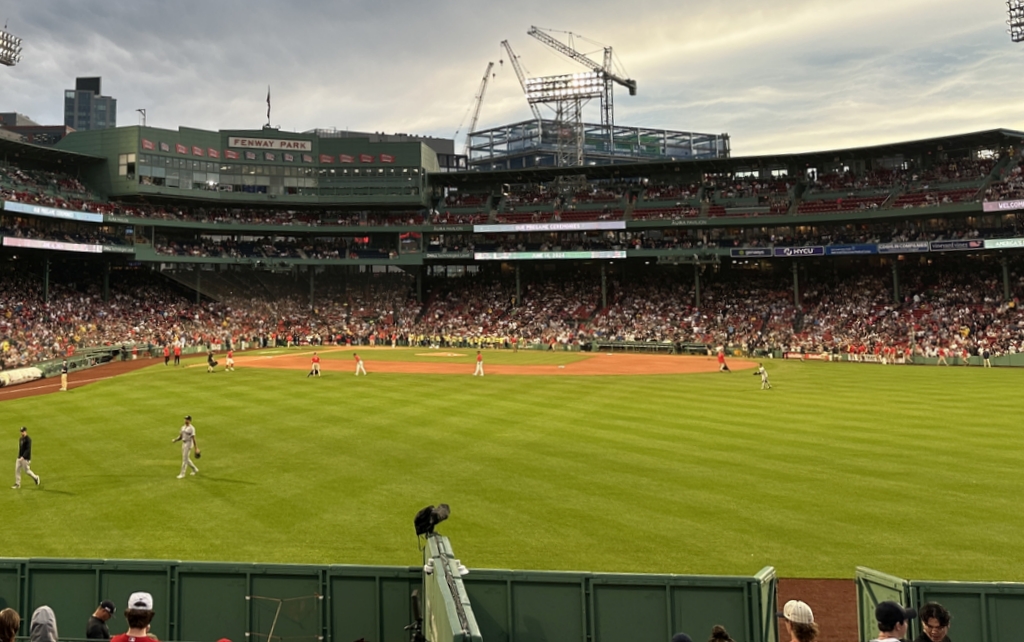Fenway Park as it appeared on September 28, 1912. Image courtesy of the Library of Congress, Bain Collection.
The scene in 2024:
For the first 35 years of its existence, the Green Monster wasn’t green – it was essentially a giant billboard. And the original Green Monster seats weren’t on top of it – they were at the base, atop Duffy’s Cliff – a steep incline leading up to the wall that was usually in play and was mastered by Boston left fielder Duffy Lewis. For this particular photo in 1912, the bleacher seats were temporarily constructed to handle the increased crowds for the 1912 World Series. The original wooden 1912 wall is gone – it was replaced in 1934 by the present-day wall, and the incline was eliminated, making left field several feet below the level of Lansdowne Street, which is located directly behind the Monster. The other major feature in the 1912 photo – the wooden left field bleachers – are also gone. They burned in 1926, and since fans weren’t exactly clamoring to get through the turnstiles at Fenway in the 1920’s, they were not replaced until Tom Yawkey purchased the team and extensively renovated the park to its current configuration in 1934. See posts #1 and #2 to see similar views from 1912 and the present-day.

